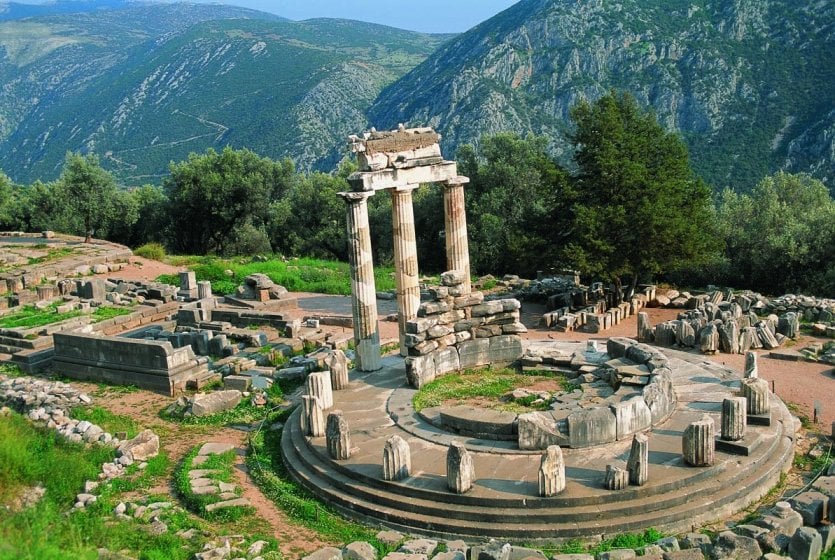
UNESCO has placed its seal on so many Greek sites that the whole country seems to be under high heritage protection! Ancient Greece played an essential role for Western civilizations and each of its legacies brings us back to the origin of art, democracy, philosophy, science... Archaeological excavations have brought back the city-states of yesteryear and today we admire the remains of their temples, theatres, baths, gymnasiums and residences. From the Acropolis of Athens to the Palace of Knossos, passing through Delphi or Olympia: embark on a journey through time guided by the gods of mythology and the stories of the Odyssey.
N° 1- Acropolis of Athens
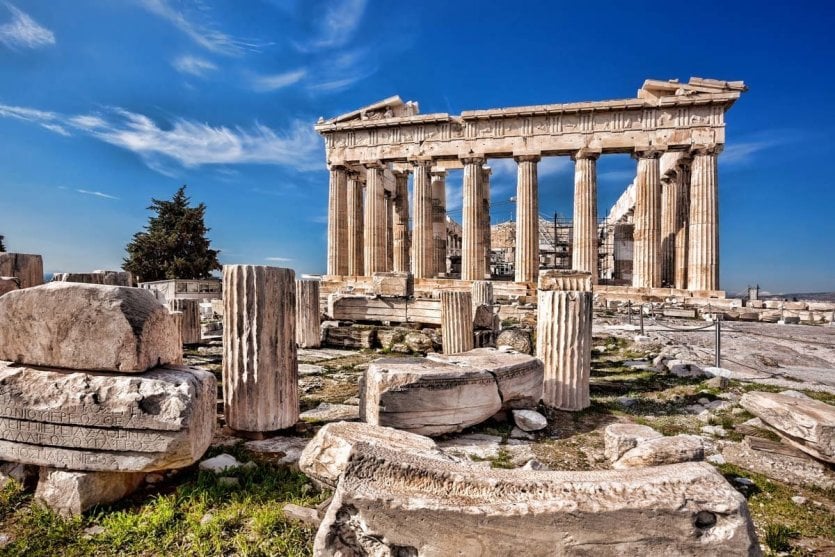
Perched on a hill in the center of Athens, theAcropolis is the most visited site in the country. Once a fortress of the Mycenaean civilization, it became a place of worship in 510 BC. All the gods and goddesses of Greek mythology had a temple or a statue dedicated to them. Among the vestiges still visible, one should not miss the Parthenon, the ancient theater of Dionysus and the temple of Athena Nike, the most adored deity. Listed as a UNESCO World Heritage Site, the site is still undergoing a major restoration campaign.
Discover our article on the 15 must-sees in Athens!
N° 2- Delphi
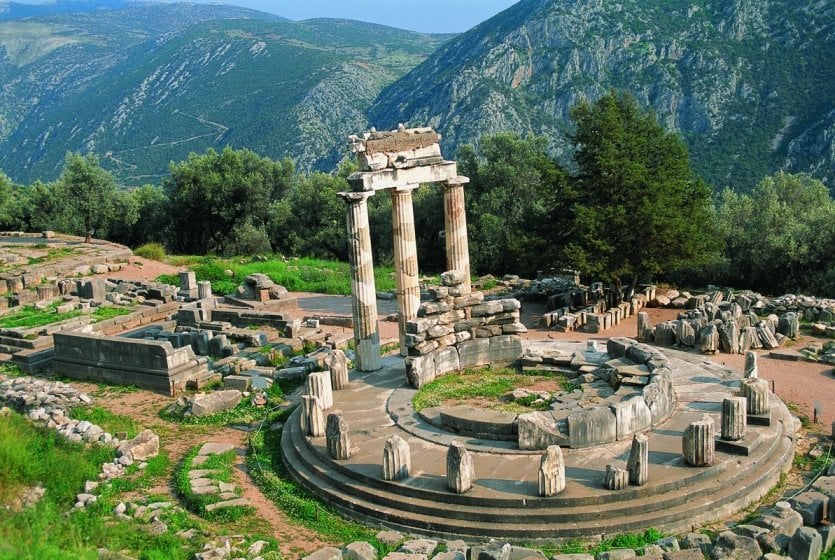
Dominating the valley of Pleistos, Delphi is one of the most important archaeological sites of Greece. This Panhellenic sanctuary, dedicated to the god Apollo, was a mystical place: it housed an oracle that attracted a large number of pilgrims who came here to know their future. Dating from the 4th century BC, the temple of Apollo and the theater have preserved their beauty in the heart of these ruins, which are also classified as a UNESCO heritage site. The natural setting of the site is beautiful, especially the panorama that extends to the Gulf of Corinth.
N° 3- Knossos
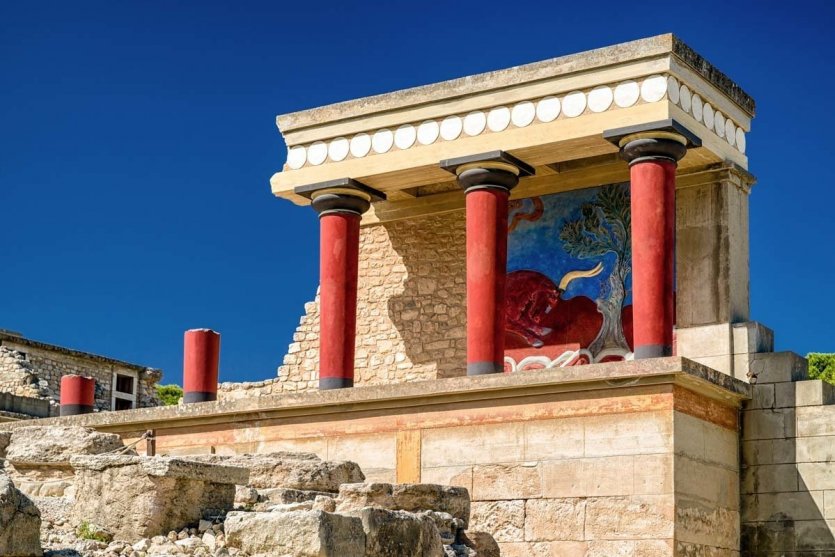
Discovered in 1900 by the British archaeologist Arthur Evan, the palace of Knossos is the most important of the Minoan palaces: its construction was spread over 600 years, from 2200 BC to 1600 BC. The ruins of the palace extend on 22 000 m², a part of them were completely reconstituted. By its inextricable plan, it was often attached to the legends of the Labyrinth and the Minotaur: the king Minos would have asked Daedalus to build the labyrinth of the palace in order to lock up a monster half-man, half-bull..
N° 4- Mycenae & Tirynthe
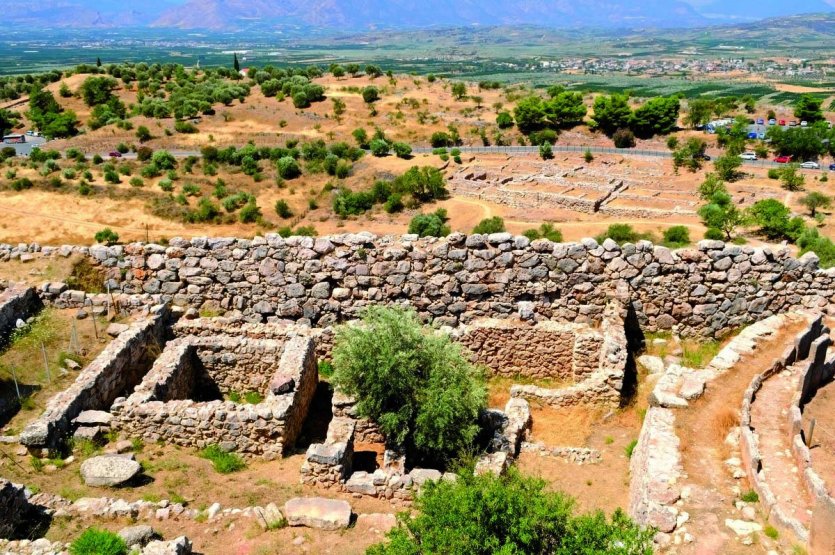
In Mycenae and Tirynthe remain the remains of two great cities of the Mycenaean civilization, linked to the Homeric epics of theIliad and theOdyssey. Once a fortress-city, Mycenae has kept its wide cyclopean walls, made of huge blocks of limestone. The same ancient military architecture can be found in Tirynthe where an impressive cyclopean wall still stands protecting the ruins of an acropolis dating from the 13th century B.C. Mycenae and Tirynthe are both listed as UNESCO World Heritage Sites.
N° 5- Olympia
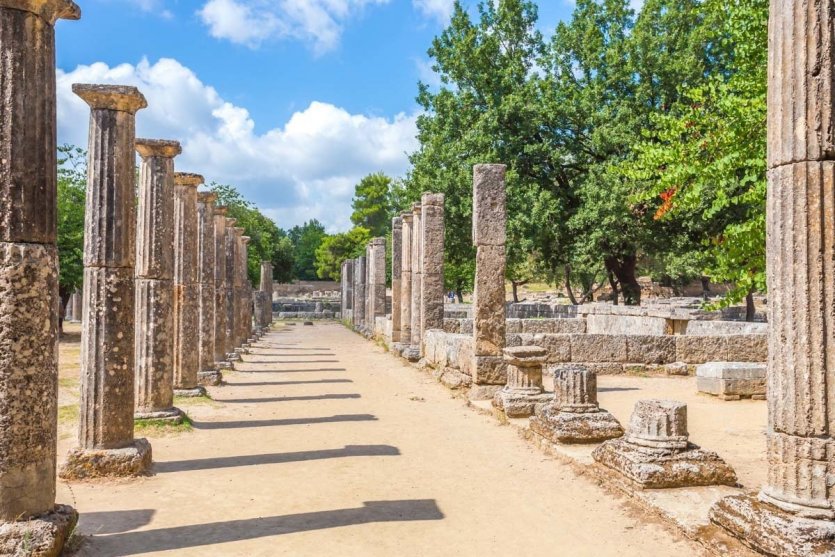
In a valley of the Peloponnese, the site of Olympia was the religious and political center of ancient Greece, during nearly 10 centuries. It was dedicated to the god Zeus, only the priests and the staff of the temples lived there. Many festive rituals were organized there, including the Olympic Games which took place every four years. Moreover, the flame is always lit there a few months before the opening ceremony of the Olympic Games. We can still see the remains of the sports facilities of the stadium, the gymnasium and the palestra. The Archaeological Museum of Olympia exhibits the finds from the site and is one of the most valuable collections in the country.
N° 6- Delos
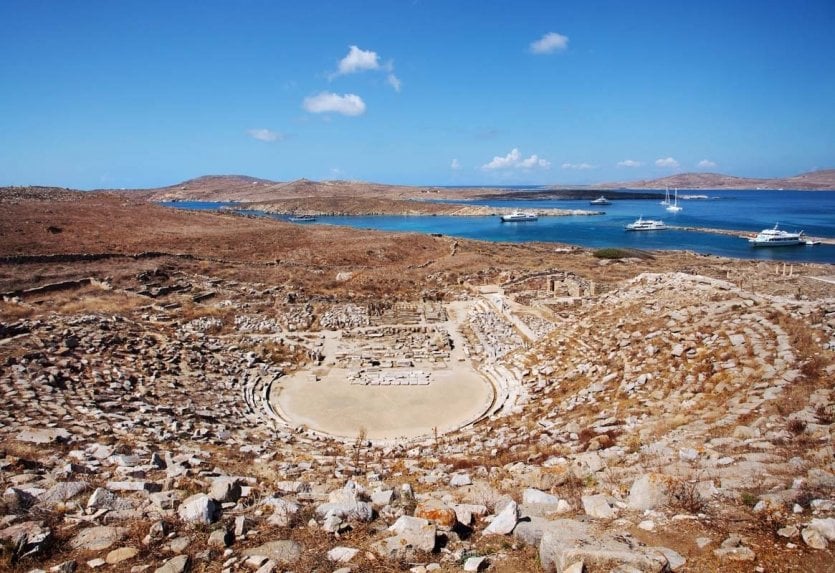
Another major archaeological site! Delos would have been created by Zeus to preserve his mistress from the jealousy of his wife and to let her give birth to her two twins: Apollo and Artemis. The island then became the largest center of the cult of Apollo. On a vast esplanade remain the vestiges of four temples which were devoted to him, they were symbolically protected by statues of lions, in the north of the portico of Antigone. Initially with the number of nine, it remains today only 5 on the site, 3 others are preserved in the museum of the island.
N° 7- Dion
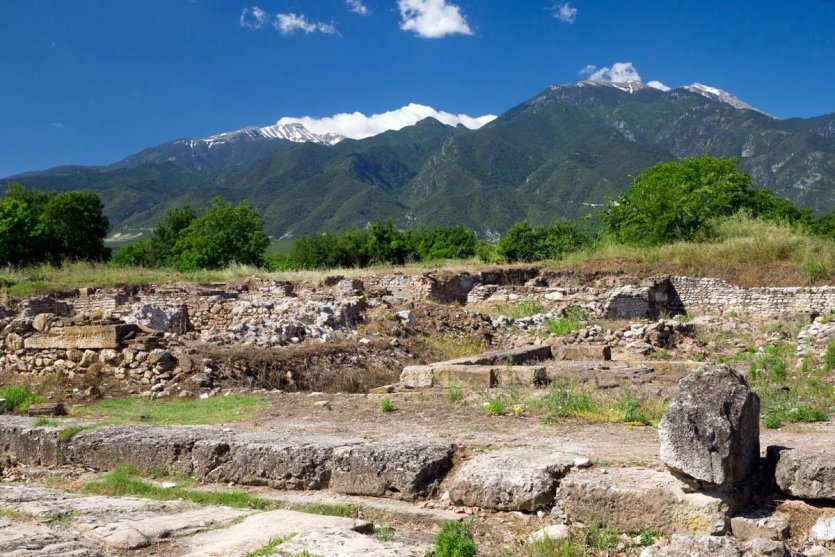
The first vestiges of this archaeological site date from the IIIth century B.C., they are the legacy of the kings of Macedonia of which Alexander the Great who particularly liked this place. It is in its theater that took place the Olympic Games of the North as well as many festivals organized by the powerful. The theater is particularly preserved and one can still see the ruins of the sanctuaries, the baths and the residences. A museum shelters the finds of the excavations of Dion and the surrounding sites. One can admire beautiful steles and statues as well as a bronze hydraulic organ dating from the first century BC.
N° 8- Epidaurus
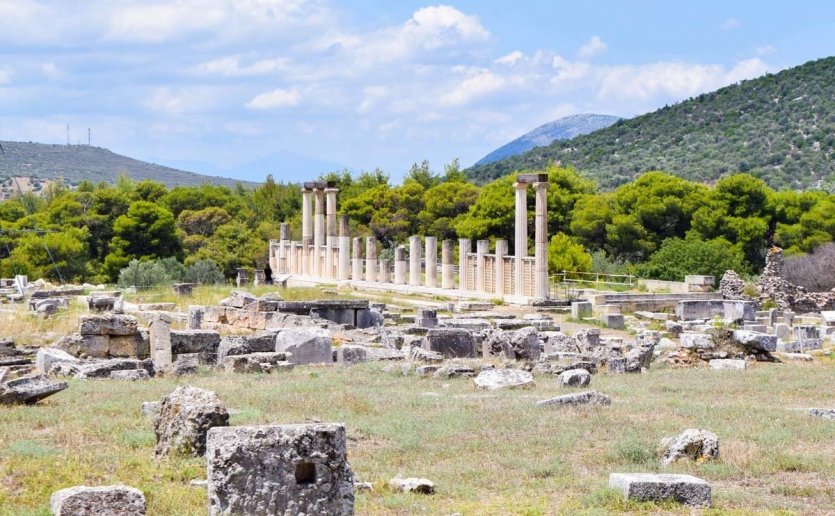
Originally, this sanctuary was dedicated to Aesculapius, the deity of Medicine, so the sick went here to be cured through therapeutic cults. Then in the 4th century BC, it became the official cult of the city-state of Epidaurus whose greatest treasure is still today its theater among the most beautiful Greek theaters of the ancient world. It has 55 rows of bleachers, it could accommodate about 14,000 spectators. One can also admire the temple of Asclepius, the Tholos and the hospital facilities dedicated to the healing gods.
N° 9- Sounio
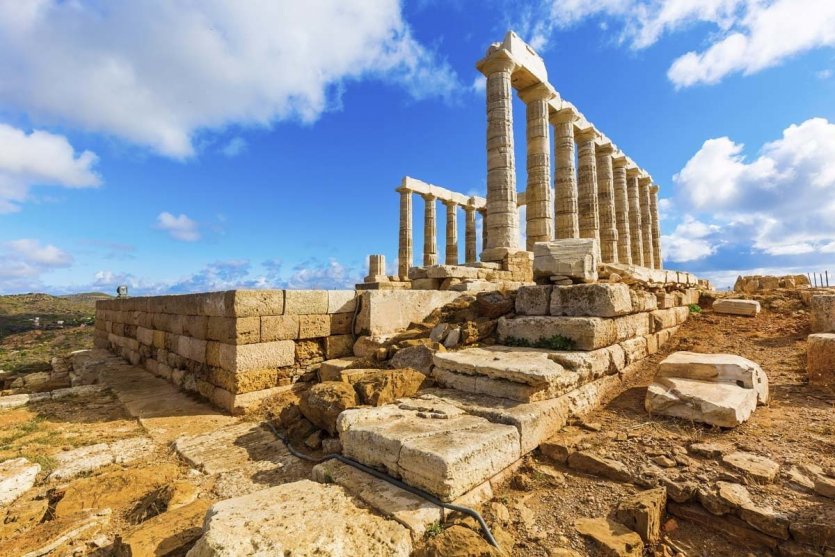
Throned on a sacred rock above the Aegean Sea, Sounio was a temple dedicated to Poseidon whose 15 white marble columns still serve as a landmark for sailors. It was built in the 4th century B.C. on a place that served as a lookout for the Athenians to watch for any suspicious ship. This site is absolutely beautiful at sunset, it offers panoramic views of the distant islands. Charmed by the place, the poet Lord Byron engraved his name on one of the Doric columns of the temple.
N° 10- Vergine
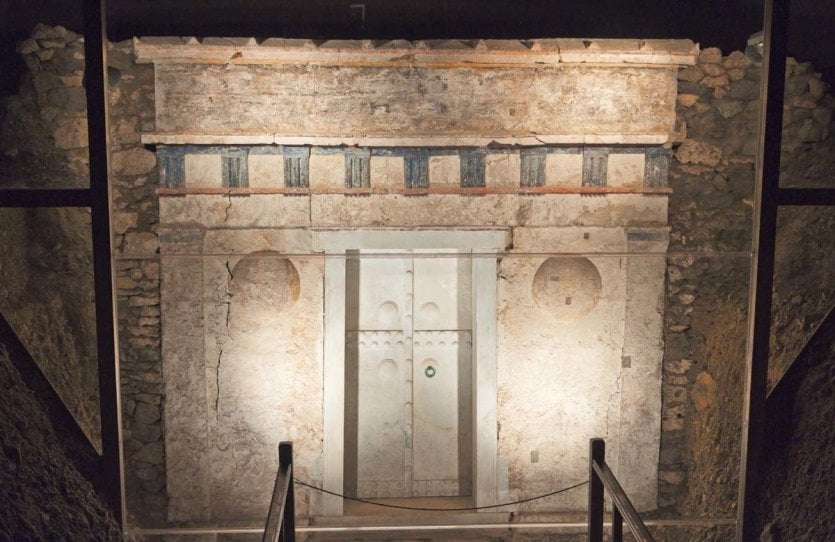
On the border of Macedonia is the museum of the Royal Tombs of Vergine, built underground to optimize the conservation of its remains. The centerpiece of the museum is the tomb of King Philip II of Macedonia, father of Alexander the Great. It consists of a large tomb with two chambers, in one of which is exposed the larnax: a box, decorated with the Macedonian sun, which contains the bones of the deceased king. The exhibition also reveals beautiful wall paintings and many ancient objects.


